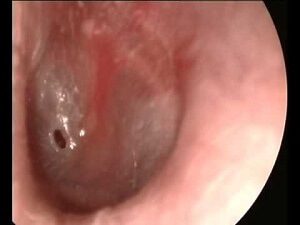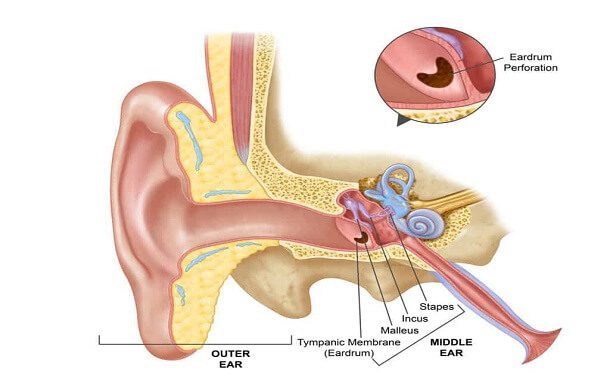How Much Does Perforated Eardrum Surgery Cost?
Last Updated on February 22, 2024
Written by CPA Alec Pow | Content Reviewed by ![]() CFA Alexander Popinker
CFA Alexander Popinker
A perforated eardrum can significantly impact your hearing and quality of life. While some small perforations may heal on their own, larger or persistent tears often require surgery for repair.
If you’ve been diagnosed with a perforated eardrum, you may be wondering what the surgery will cost. Here’s a comprehensive overview of the expenses involved so you can make an informed decision.
How Much Does Perforated Eardrum Surgery Cost?
The total cost of perforated eardrum surgery can range from $2,000 to $8,000, depending on the complexity of the procedure. Some of the main factors impacting the price include:
- Hospital Fees: This covers the cost of the operating room, equipment, supplies, and other facility charges. Hospital fees often account for the largest portion of the total bill, typically ranging from $1,500 to $5,000.
- Surgeon’s Fee: The ear specialist performing the surgery will charge a fee for their expertise and time. Surgeon’s fees are often $500 to $2,500.
- Anesthesia Fees: If general anesthesia is used, you’ll incur additional fees for the anesthesiologist’s services, costing $500 to $1,500.
- Medications and Medical Supplies: Any prescription medications, ear drops, and other supplies needed for recovery will add to the total. Expect to pay $200 to $500 for these expenses.
- Diagnostic Tests: Imaging scans like CTs or MRIs done before surgery to assess the injury cost $300 to $1,000 on average.
- Follow-Up Visits: You’ll need at least one post-op visit, which can be $100 to $300 depending on your provider.
With all costs combined, the average total price of eardrum repair surgery is $3,500 to $6,000. However, your specific out-of-pocket costs will depend on your insurance coverage.
MDsave.com provides the cost of a tympanoplasty eardrum repair ranging from $3,706 to $5,978 in Texas.
Introduction to Perforated Eardrum
A perforated eardrum is a hole or rupture in the eardrum, also known as the tympanic membrane. This thin tissue divides your outer ear from the middle ear. Common causes include middle ear infections, trauma from an object or pressure to the ear, loud noises, and skull fractures.
Symptoms include ear pain, discharge from the ear, hearing loss, ringing in the ear (tinnitus), and dizziness. Your doctor can diagnose a perforated eardrum simply by looking inside your ear with an otoscope. Imaging tests like CT scans may also be used to assess the injury.
If your eardrum doesn’t heal on its own after a few months, surgery may be recommended to repair the perforation and restore hearing. The two main surgical options are myringoplasty and tympanoplasty.
Surgical Treatment Options
Myringoplasty is the procedure done to repair smaller perforations confined to the eardrum itself. The eardrum is grafted with a tissue patch, allowing it to heal. This straightforward surgery takes 1-2 hours.
For larger perforations or when other middle ear structures beyond the eardrum are also damaged, tympanoplasty is performed. This more extensive surgery can take 2-3 hours as the middle ear bones or other areas are reconstructed along with the eardrum graft.
In both procedures, an ear specialist will make an incision behind the ear to access the middle ear and eardrum. Then a graft made from tissue taken from the patient is used to patch the hole. Once stitched in place, this allows the eardrum to heal.
Myringoplasty costs less given its simpler approach focused just on the eardrum itself. Tympanoplasty has higher fees on average due to the complexity of repairing other middle ear components.
Insurance Coverage and Financial Aid
Most health insurance plans cover perforated eardrum surgery, but the reimbursement amount varies. With an HMO or PPO, you’ll typically pay a copay of $100-$500 and your insurance covers the remainder. Your out-of-pocket costs are higher with plans like POS and HDHPs, where you pay 10-50% of the total fees until meeting your annual deductible.
Ask your insurer for an estimate of the surgery coverage and your expected share of the fees. Also inquire about financial assistance programs or discounted rates through partnered facilities. Some hospitals offer payment plans or financial aid for qualifying patients.
Factors Influencing Surgery Cost
Several key factors impact the overall price you’ll pay for eardrum repair:
- Geographic Location: Costs are typically highest in major metropolitan areas and lowest in rural regions.
- Choice of Surgeon and Hospital: Academic medical centers and highly experienced surgeons often command higher prices. Community hospitals and new surgeons generally cost less.
- Complexity: Large or recurring perforations requiring tympanoplasty are more expensive to treat than simple myringoplasty cases. Other complicating health factors also raise costs.
- Hospital Setting: Outpatient surgery is most affordable. Inpatient hospital stays or emergency repairs cost more due to facility overhead.
- Anesthesia Type: General anesthesia involves specialized providers and additional monitoring equipment, increasing fees versus local or regional anesthesia.
Preparing for Surgery
Thorough preparation helps ensure you heal well after surgery:
- You’ll need a pre-operative physical exam and lab work to clear you for the procedure.
- Smoking and certain medications like blood thinners should be avoided before surgery.
- Arrange for transportation and assistance as you cannot drive yourself home after being sedated.
- Make preparations for post-op care and recovery at home. Stock up on soft foods and add extra pillows to elevate your head at night.
You might also like my articles about the cost of an elf ear surgery, SARPE surgery, or a Miracle-Ear device.
The surgery itself takes 1-3 hours depending on the technique used. You’ll be monitored in the recovery room before being discharged once stable, alert, and able to eat and use the bathroom.
Recovery and Aftercare
 Initial recovery takes around 2 weeks, avoiding strenuous activity and keeping the ear dry. You may have dizziness, pain and discharge as you heal. Over-the-counter pain relievers help manage discomfort.
Initial recovery takes around 2 weeks, avoiding strenuous activity and keeping the ear dry. You may have dizziness, pain and discharge as you heal. Over-the-counter pain relievers help manage discomfort.
Follow up with your surgeon as directed to check on progress. The grafted eardrum takes 3-6 months for full healing. Most patients see hearing improvement after about 6 weeks. But maximum hearing restoration can take up to a year.
Potential complications like re-perforation or infection can require additional treatment, increasing costs. Protect your ear with covers while showering and avoid swimming until fully healed. Don’t insert cotton swabs or objects in the ear canal.
Success rates for fully closing the eardrum perforation are around 90%. Hearing is restored to normal or near-normal levels in approximately 80% of patients.
Frequently Asked Questions
Is eardrum surgery worth it?
For most patients with persistent perforations, surgery is worthwhile to repair hearing loss and prevent complications like infections. The benefits tend to outweigh the time, discomfort and cost of treatment.
How long does a perforated eardrum surgery take?
The procedure itself typically takes 1-3 hours depending on the technique used. Myringoplasty can be done in around 1 hour. Tympanoplasty often takes 2-3 hours given the intricate middle ear repairs involved.
Can you go deaf from ear surgery?
Total deafness is extremely rare. But some hearing loss is possible if surgical complications arise. Generally, eardrum repair surgery is done to improve hearing and prevent further hearing damage from the perforation.
For more information on perforated eardrum treatment options and what to expect with surgery, consult with an ear, nose and throat (ENT) specialist. They can advise you on the recommended approach based on your specific injury and health profile. Being informed about the process, risks and costs can help you make the best decision.


Leave a Reply
Want to join the discussion?Feel free to contribute!